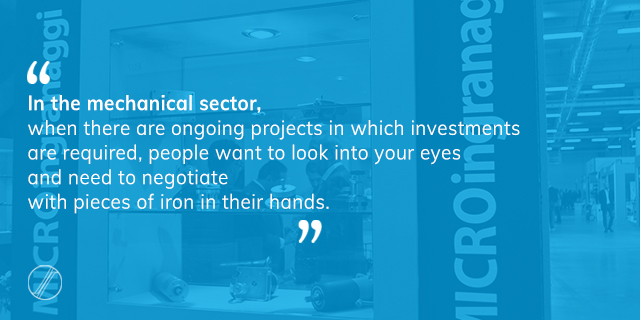I have received several comments to my post on the hob cutting times for gears and one in particular – that of Silvio Novasconi who wrote about an experience he had hobbing a gear on a lathe, stating that the part in question was a gear of “minor importance” – reminded me of a topic that I would like to discuss further with you.
The gear hobbing machine in fact is not the only machine that can be used to produce gears; these components can also be made using a lathe, provided that it is a CNC machine and equipped with a specific software and a specific tool holder to assemble the hob. There are however a number of differences between these two machines.
As many of you know, the gear hobbing machine is a secondary production machine, which means that in order to produce a finished component, it is necessary to start from a semifinished product previously processed using a lathe. A hobbing machine is also a very expensive piece of equipment and can only and exclusively used to produce gears. So a question may come to mind:
why not replace the gear hobbing machine with a CNC lathe so as to manufacture the gears at a much cheaper price?
The answer to this question may not be so obvious and since, for various reasons, we a MICROingranaggi have often found ourselves examining this question in detail – equipping ourselves over the years to produce gears both using a lathe and multitasking machines, in addition to using a gear hobbing machine – I would like to share our experience.
A company like ours, which has been manufacturing gears for almost 50 years, has expert knowledge of the characteristics of this mechanical component: it knows how it works, what the production problems are, what needs checking during quality control and, above all, is equipped to provide measurement and certification services. Moreover, since we also design and engineer gears and gearboxes (including the geometries and strength calculations), we can claim to know even the smallest and most apparent details in the profiles that can certainly make a difference depending on the applications for which they were designed.
Well, on the basis of our experience, we have noticed that
the most common errors detected by the evolventimeter on gear hobbing using a lathe refer to a propeller powered evolventimeter machine, and are mainly due to errors in the positioning of the tool.
This is because the tool holders are never rigid as the chuck on a gear hobbing machine, and the transmitted power will be lower than that used by a gear hobbing machine. This means that the hobbing module achievable using a lathe will be limited and, likewise, the material to be cut can not be as hard. On the contrary, in fact, processing times would not be so convenient. However, at the same time, it must also be said that we recorded excellent results in terms of division and run out (concentricity) when processing gears using a lather machine.
The production of gears using a lathe, moreover, is not suitable for large scale production
as the tool holder and the kinematics of these machines are more delicate and fragile than those of a gear hobbing machine; therefore, if it is used continuously, there will be signs of wear and tear very early on.
Without in-depth knowledge of hobs, in fact, it is difficult to understand what the exact positioning must be inside the machine, the maximum acceptable wear conditions (the gear hobbing machines have the Y-axis that automatically moves the hob along its entire length), and this could lead to the processing of faulty gears in the lot, or high regrinding costs or lower duration of the tool per parts produced.
Another very delicate subject is the handling of the gear.
If on the one hand, the gear hobbing machine loading and unloading systems have been designed to avoid, as far as possible, the risk of possible dents occurring, on the other hand these machines are almost always equipped with deburring devices which clean the hob output burrs the moment they form.
If we have to choose between one of these two machines, in my opinion, the best solution is to rely on genuinely specialized enterprises.
The reason being that the experts of such companies – with their expertise and experience in the gear sector and the correct equipment to carry out all the necessary measurements – will be the ones to decide if any specific component is feasible in certain conditions or not, and it will be up to then again to know where and what adjustments to make on the machine. Because, and this must never be forgotten,
of course customers appreciate lower costs, but they also demand compliance with the tolerances indicated in the drawings and that the component works properly in the situation it was designed for.
There is indeed another important aspect to be considered. Customers are almost never equipped to test gear teeth and not always a badly produced gear is detectable in the assembly or final testing phases. Often the problems arise months later and for this reason extreme caution should be taken beforehand: the risk is, in fact, that the good intention of procuring orders which bring savings for the customer, could lead to higher levels of extensive damage (and hence costs) further down the line.
Moral of the story:
from my point of view, gear hobbing machines are irreplaceable when it comes to making “top standard” gears and for large-scale productions.
Manufacturing gears is a complex job, and I believe it should be assigned, to the extent possible, to specialized enterprises.





